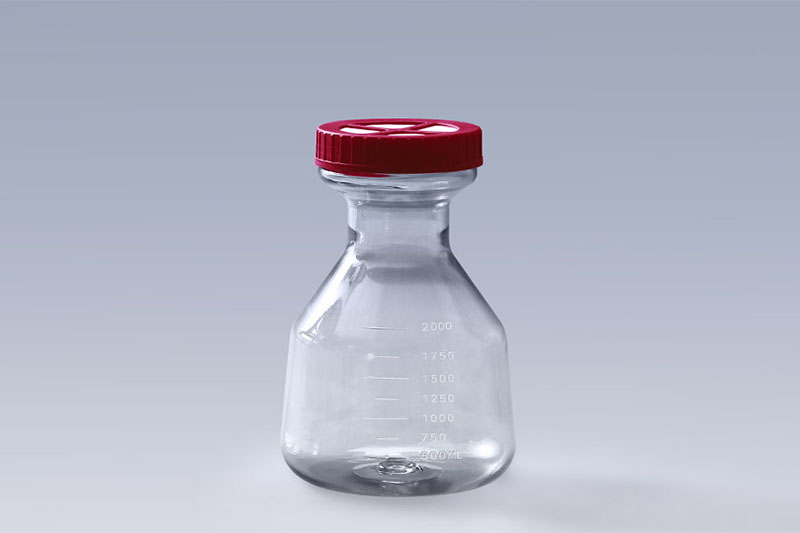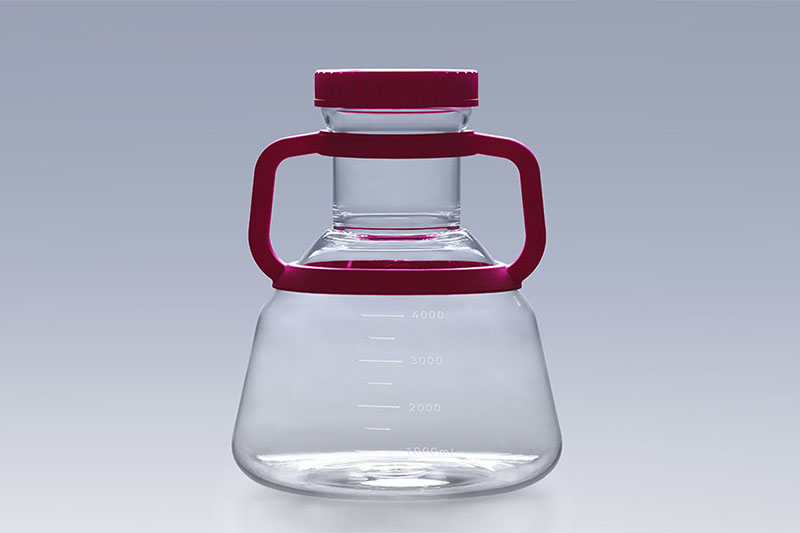High-efficiency shake flasks are mostly used for suspension culture of cells or mass expression of proteins. Cells are very sensitive to the culture environment. Therefore, this culture container must pass various quality tests to ensure that it is qualified before it can be used for cell culture. Among many detection items, in vitro cytotoxicity test is a very important detection index.
In vitro cytotoxicity testing is mainly used to rate the potential of medical devices and biomaterials to cause cytotoxic reactions, and to predict the tissue cell responses in the final application of organisms, such as cytolysis, growth inhibition, functional changes, cell death and other toxic reactions. Required items before clinical application of medical devices and biomaterials. The in vitro cytotoxicity test of high-efficiency shake flasks refers to the USP-NF <87> standard, and there are three main test methods:
1. Agar Diffusion Method
Applicable to elastic closures of various shapes, a piece of agar supplemented with nutrients is covered on the cultured cell line, and then the test material is placed on the agar layer. The dissolved chemicals in the material then diffuse into the agar and come into contact with the cells. A material can be judged to be cytotoxic if cell lines around or beneath the material show malformation, degeneration, and decomposition.
3L-Erlenmeyer-Shake-Flasks
2. Direct contact method
The test material is placed directly on the cell line and incubated at an appropriate temperature. During the cultivation process, some leached chemicals will diffuse into the medium and come into direct contact with the cells. A material can be judged to be cytotoxic if the cell lines surrounding it appear deformed, degenerate, and disintegrate.
5L Erlenmeyer Shake Flasks
3. Elution method
This method is used to judge the cytotoxicity of the test material extract. Generally, the actual use state or worse situation is simulated, and different extraction agents and conditions are used for extraction. The extract is then transferred to a cell layer and cultured, and the cells are observed under a microscope for malformation, degeneration, and breakdown.
The above is the in vitro cytotoxicity test of high-efficiency shake flasks. Due to the large number of test methods and their own characteristics, it is difficult to achieve complete consistency between different methods. Reasonably choose the contact mode between the test product and the cells and the evaluation method of the biological endpoint.
The FAI climbed 5.9 percent year-on-year in the first 11 months of 2018, quickening from the 5.7-percent growth in Jan-Oct, the National Bureau of Statistics (NBS) said Friday in an online statement.
The key indicator of investment, dubbed a major growth driver, hit the bottom in August and has since started to rebound steadily.
In the face of emerging economic challenges home and abroad, China has stepped up efforts to stabilize investment, in particular rolling out measures to motivate private investors and channel funds into infrastructure.
Friday's data showed private investment, accounting for more than 60 percent of the total FAI, expanded by a brisk 8.7 percent.
NBS spokesperson Mao Shengyong said funds into weak economic links registered rapid increases as investment in environmental protection and agriculture jumped 42 percent and 12.5 percent respectively, much faster than the average.
In breakdown, investment in high-tech and equipment manufacturing remained vigorous with 16.1-percent and 11.6-percent increases respectively in the first 11 months. Infrastructure investment gained 3.7 percent, staying flat. Investment in property development rose 9.7 percent, also unchanged.
 English
English




















































